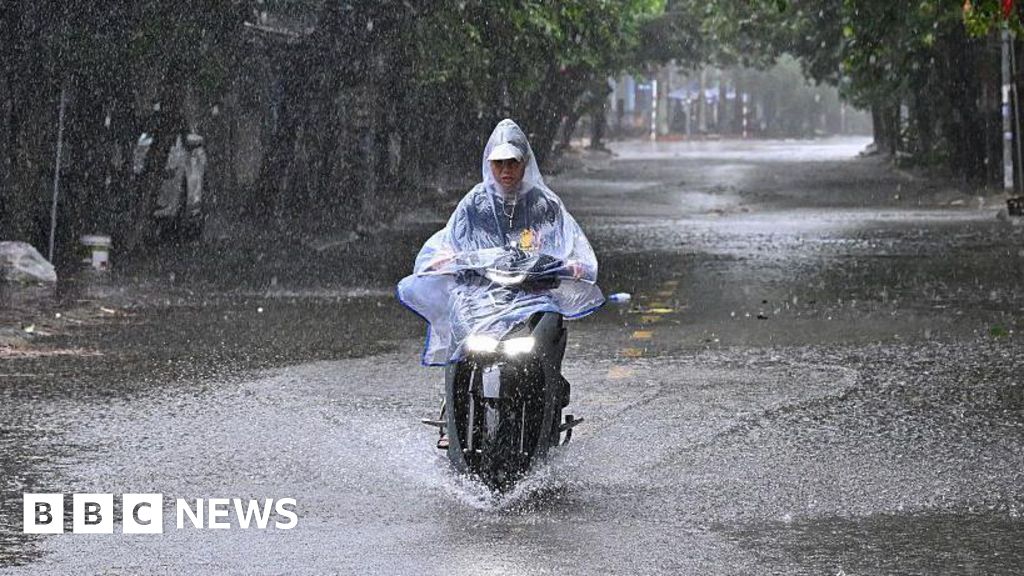A powerful typhoon has battered Vietnam’s coastal provinces, with strong winds and rains felling trees and tearing the roofs off houses.
Schools and airports were closed and almost 600,000 people across the country were ordered to leave their homes ahead of Typhoon Kajiki’s arrival on Monday afternoon in the coastal province of Ha Tinh.
One evacuee in Vietnam’s Nghe An province told news agency Reuters he could see “waves as tall as two metres, and water [flooding] the roads around us”, adding that it was “terrifying”.
It comes less than a year after the country was hit by Typhoon Yagi – its most powerful storm in 30 years – which killed 300 people in Vietnam alone.
Vietnam’s meteorological centre says the typhoon could trigger flash floods and landslides, and 400 communes across six provinces have been put on alert.
The typhoon had earlier skirted China’s southern coast – inflicting damage to roads, water supply systems and infrastructure – as it made its way towards Vietnam.
It made landfall in Vietnam on Monday afternoon, bringing with it winds of up to 118-133 km/h (73-82 mph).
Ahead of is arrival, residences in the central provinces of Thanh Hoa, Quang Tri, Hue and Da Nang were ordered to evacuate. Vietnam also suspended flights at two airports in its central region and some train services.
Authorities had earlier said the typhoon could be the country’s strongest storm this year.
The weather authority later said the storm had decreased in intensity, but that wind speeds remain high.
“I have never heard of a typhoon of this big scale coming to our city,” 66-year-old Le Manh Tung, from the coastal city of Vinh, had earlier told news agency AFP.
“I am a bit scared, but then we have to accept it because it’s nature — we cannot do anything.”
In the coastal province of Nghe An, 48-year-old resident Dang Xuan Phuong told Reuters that he could see waves of up to two metres.
Meteorologists say that as the world warms, typhoons can bring higher wind speeds and more intense rainfall, although the influence of climate change on individual storms is complicated.
Typhoon Yagi, which made landfall in Vietnam in September last year, wreaked havoc across the country, causing billions in damage and leaving some 1.5 million people without power.
The storm swept through large parts of South East Asia, including Laos, Thailand and Myanmar, killing more than 500 people across the region, according to official figures.
